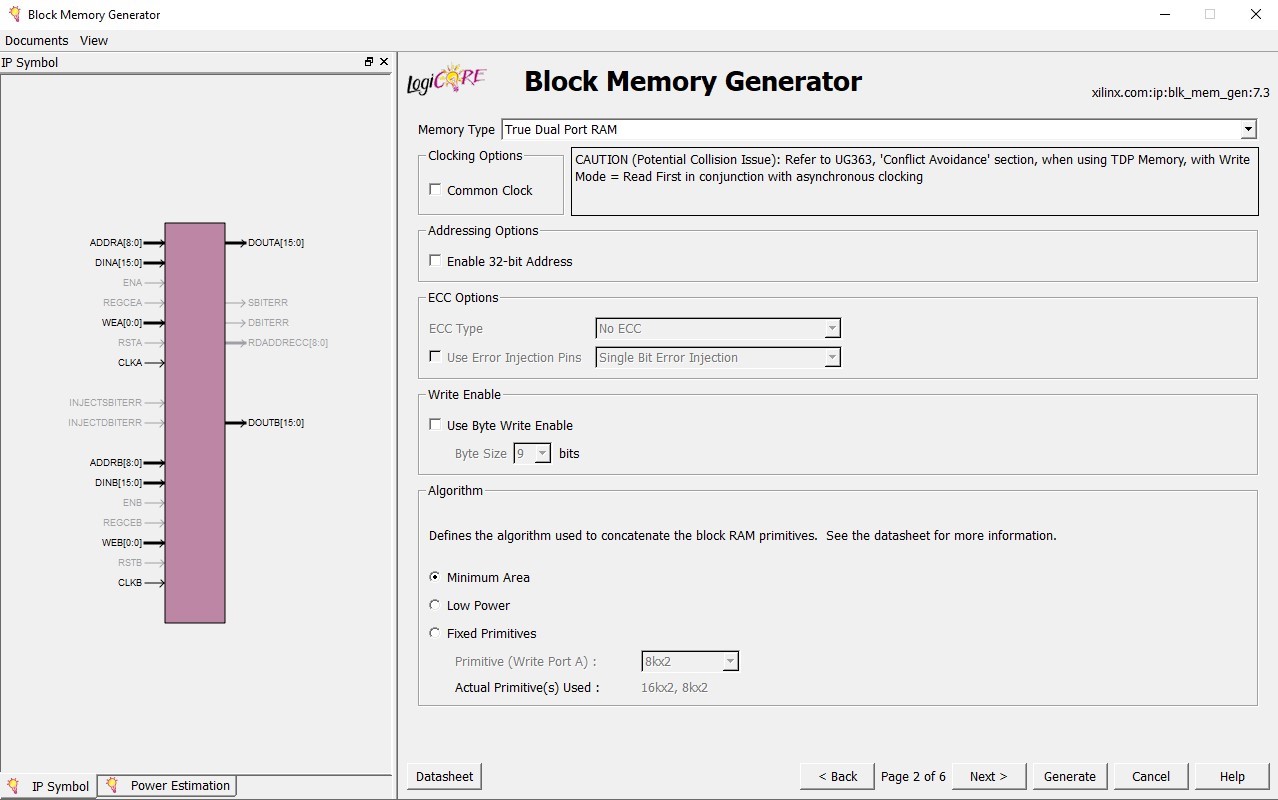New: Integer matrices have been added (currently untested)
This system can multiply two matrices of any size (assuming they fit in our RAM and can be multiplied) using a block-multiplication scheme. The design is not confined by any number type - this version uses IEEE754 single-point numbers, but it can be easily modified to multiply any type of numbers (static point, integer, double-precision 754, etc.) Input matrices ('A' and 'B') are saved in some RAM, elementwise, with the following order:
The final matrices are stored in the RAM - A and B from the top (0th word, downwards) and C=AxB from the bottom (nth word, upwards) as such: It breaks your matrix into 2x2 blocks, performs block multiplication and stores the results in the RAM again.The general idea is that a control unit generates read/write addresses for the RAM, manages operands and issues commands to an accumulator/multiplier in order to perform the multiplication. The '2x2 multiplier' can multiply two 2x2 matrices in a few clocks. The accumulator can 'accumulate' a value, in order to calculate an element from AxB as the addition of multiple products from A and B.
This is the design hierarchy, which utilizes FP multipliers and adders (as an accumulator and a 2x2 multiplier), a RAM unit (BRAM in our synthesis) and a control unit.
Currently, the module does not 'output' any data per se, but stores the results in its own BRAM. In order to write/read to this BRAM, it must be modified to a dual-port BRAM, or a MUX must be implemented to achieve dual-port-ness in some sense.
This design is pipelined (and it can be further pipelined, for future work):
Reading the operands for the next block multiplication and the current block multiplication occur in parallel.
The included python file can test the operation of our module with the help of ModelSim. Also, this design has been synthesized on a Xilinx Spartan-6 FPGA, and it's operation has been verified with the help of a Raspberry Pi Pico:









